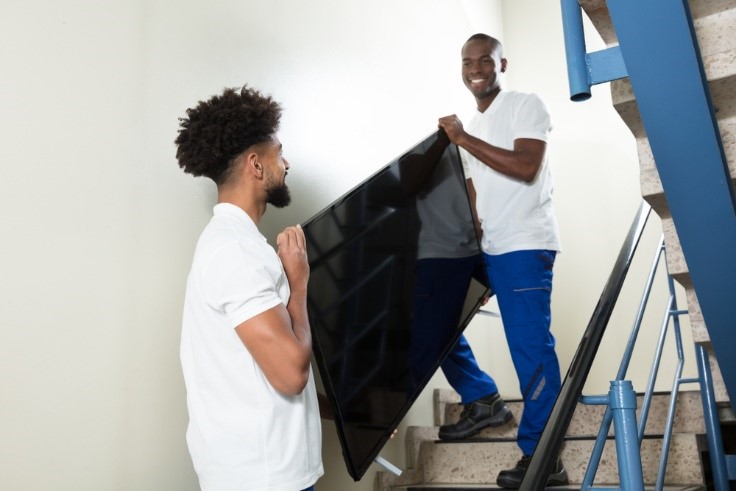Usually, when you move, you take everything in your home that isn’t bolted down. However, as technology has become more integral to everyday life, the tech devices and services we might have left behind usually need to relocate with us. Unfortunately, despite all the tech industry’s wild advances, many devices and equipment still aren’t robust enough to survive a move unprepared. If you are struggling to understand what tech to move and how, here’s a short and sweet guide to moving with tech the smart way.
Device Safety
Considering that most tech devices cost several hundred (if not several thousand) dollars, tech safety should be among your primary concerns during a move. Even a short drop or seemingly minor jostle can irreparably harm some devices, so you need to confident in the packing and transporting of your tech.
Usually, the safest way to convey tech is in the packaging you purchased it in. This is because the box and packaging materials around the tech are perfectly molded to hold the device in place and absorb any potentially harmful shocks. If you didn’t retain these, you can usually keep smaller, handheld tech — like smartphones, tablets and smaller laptops — in a bag or book box surrounded by softer materials, like clothing, blankets or pillows. For larger tech, like televisions, you can purchase appropriately sized boxes from moving companies like U-Haul, or you can wrap the equipment in a large blanket and try to keep the device secure against a wall or floor during the move.
An even better solution is to hire professional movers to worry about your device safety. You can customize the services you want your movers to complete; for example, you might pack your tech in boxes, but you might hire movers to carry the heavy tech out and into your new home. Movers have experience with all sorts of delicate valuables, so you can be certain they’ll handle your tech with care.
Internet Access
Among the least convenient periods of a move is when you have all your old stuff at your new place — but none of the utilities are hooked up. Lacking internet is especially bothersome because it often impedes your ability to activate other utilities, unpack properly or otherwise get settled in your new digs.
That’s why you should work with your internet service provider (ISP) before you move to transfer your service on your move date. Then, your ISP will perform all necessary groundwork to prepare your property adequately in the weeks and days before your move date, and as soon as you plug in a modem and router in your new home, the internet will be waiting for you.
Large Tech Mounting
Even after you have all your old tech in your new home, your move isn’t over. Now you need to unpack, which for larger tech items like TVs, speaker systems and the like, requires some installation. Unfortunately, mounting a flat screen isn’t as easy as you would expect, and an improper mount of any device could result in overlarge holes in your wall, uneven technology or major accidents down the line.
Thus, if you don’t have experience mounting large technology yourself, you shouldn’t even make an attempt if it risks the safety of your tech; instead, you should bring in the experts. TV wall-mounting services in Philly, Chi-Town, L.A. and other major cities will ensure that your walls aren’t damaged from the mount while guaranteeing that your tech will stay up (and functional) for as long as you need it to.
Smart Home Installation
When you work hard to make your home smart, with items like smart locks and doorbells, smart plugs and lights, smart speakers, smart appliances and the rest, you might not be certain what tech to bring with you when you move. While smart technology can increase the value of a home, you might not want to abandon all the devices you worked hard to buy and install. Thus, you should probably strike a balance between what you’ll leave and what you’ll take.
It’s a good idea to take all plug-and-play smart devices with you on your move. That means smart speakers, smart plugs, smart cameras and the like should be packed up. Meanwhile, smart tech that is semi-permanent, like smart switches, smart doorbells and smart thermostats, might be better left in place. Then, you can invest in the latest and greatest models for your new home and hire professionals to ensure they are properly installed.

